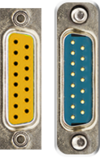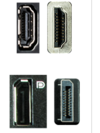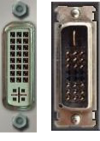Computing Overview Flashcards
(56 cards)
Networking and Communications
The practice of connecting two or more computers in order to transfer data. Networking components include:
- Connecting media:
- Copper cables
- Radio signals
- Connection devices:
- Routers
- Switches
Output
The process of the computer presenting, displaying, or otherwise giving data. Output devices include:
- Video
- Audio
- Printing
Storage Devices
Devices that contain non-volatile memory for saving or maintaining data. Storage devices include:
- Hard disk drives
- Solid-state drives
- Optical drives (CD-ROM, DVD-ROM, and Blu-ray)
- Flash drives
Processing
The flow of data through a series of procedures as defined by a set of instructions. Major processing components include:
- CPU (central processing unit)
- RAM (random-access memory)
- RAM is a temporary short-term type of storage used to store processed information for quick access. RAM is considered volatile memory because it is not persistent. When the computer is turned off, all the data that was stored in RAM is lost.
Hardware
The physical components that compose a computer system or network. Common hardware components include the following:
- Keyboard, mouse, monitor, printer
- Connectors and cables
- Hard disk drives
- Circuit boards
Software
Instructions or data that are stored electronically, either on a hard drive or a special chip. Software components include the following:
- Operating systems.
- Program applications.
- Hardware drivers (special programs that tell the operating system how to use the hardware.)
Firmware is a special type of software that is embedded in the read-only memory of a hardware component. A BIOS chip is an example of firmware.
Input
The movement of data or commands to the internal computer hardware. Input devices include:
- Standard input devices:
- Mouse
- Keyboard
- Touchscreen
- Gaming input devices:
- Game controller
- Joystick
- Media input devices:
- Scanner
- Digital camera
- Webcam
- Audio input devices:
- Microphone
- MIDI controller

The DB-15 port is used by legacy gamepads, joysticks, and MIDI devices.
These ports are typically found on older sound cards.

parallel port (DB-25)
The parallel port connects older devices that use a parallel interface, such as printers, hard drives, and gamepads.
The parallel port was superseded by the USB and RJ45 port.

Serial Port (DB-9)
The serial port is used to connect serial devices, such as a barcode scanner, dial-up modem, or serial mouse. Serial ports are also used to configure and manage some networking devices.
RS-232 is a standard for serial communication transmission of data. It defines the signals connecting computer equipment like a computer and a modem. The RS-232 standard was commonly used in computer serial ports. USB has replaced RS-232 for most of its peripheral interface roles. Many computers no longer come equipped with RS-232 ports.

PS/2 (Mini-DIN-6)
The PS/2 port, also called mini-DIN-6, is used to connect older PS/2 keyboard or mouse devices. PS/2 ports are color coded. Purple denotes the keyboard port, and green denotes the mouse port.
The PS/2 port has been superseded by the USB port.

RJ11 ports are used by telephones and modems to send analog signals. RJ11 ports have four connector pins

RJ45 ports are used to create Ethernet networks by connecting multiple computers and networking devices. RJ45 ports have eight connector pins.

Coaxial S/PDIF and Fiber S/PDIF
The S/PDIF port is used to send a digital audio signal to high-end audio devices such as home theatre systems or Dolby Digital surround sound systems.
- Coaxial S/PDIF ports use a copper coaxial cable to transmit signals.
- Fiber S/PDIF ports use fiber optic cables to transmit signals.

The USB port is one of the most common computer ports. USB ports are used to connect a variety of devices.
- Mouse and keyboard devices
- External storage devices
- Digital cameras
- Printers
- Scanners
- Microphones
- Webcams
Identify and describe

Audio jacks are used to send or receive analog audio signals. Audio jacks use 3.5 mm TRS connectors to connect audio devices such as:
- Speakers
- Headphones
- Microphones
- Audio output devices
Audio jacks use a common color code to denote the port type:
- Green: line out
- Pink: mic in
- Blue: line in
- Orange: subwoofer
- Black: rear speakers

S-Video (miniDin-4)
The separated video (s-video) port is used for connecting external displays. It has slightly better picture quality than an RCA video port.

The Thunderbolt port combines PCI Express (PCIe) and DisplayPort signals into a single interface. The Thunderbolt port can also provide DC power. Thunderbolt ports are mainly used for external displays.

HDMI and DisplayPort
The High-Definition Multimedia Interface (HDMI) port and DisplayPort are used to send high-quality digital video and audio signals. The following devices use the HDMI and DisplayPort:
- LCD monitors
- HDTVs
HDMI has a smaller form factor connector called an HDMI-mini connector. This connector is half the size of a standard HDMI connector and is used to connect smart phones, tablets, and digital cameras to external displays.

A digital visual interface (DVI) port is used to connect display devices. DVI ports:
- Carry either an analog signal, a digital signal, or both.
- Support one of two cable and connector types, single link or dual link.

VGA (DE-15)
The video graphics array (VGA) port is used to connect external display devices such as projectors and some monitors. VGA ports:
- Transmit an analog video signal.
- Have three rows of five pins.
- Use a DE-15 connector.
DE-15 connectors are often called DB-15 connectors, which is a misnomer.

HDMI to DVI
Used to connect an HDMI cable to a DVI port.

Used to connect a VGA cable to a DVI port.

Used to connect a VGA cable to an HDMI port.



